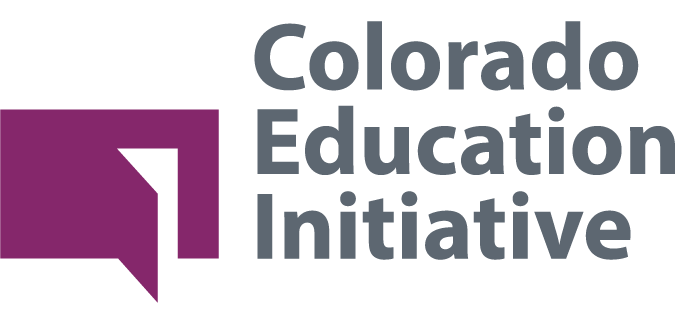

COVID-19 has caused students to miss out on valuable instructional time and social emotional connection and growth. Students, educators, and families are also facing new challenges in distance learning and possible mid-year shifts in how learning happens. To understand and respond to the needs of a district’s community, they must assess the current state of their stakeholders and prepare their community for what might be ahead.
Work with an innovator’s mindset this year. You will discover new practices this year that hold potential to solve long-standing, intractable problems. Create a cadence where you iterate… discover… on a regular basis.
Create the conditions for people to do their best work by addressing unmet needs, skill gaps, and uncertainties that undermine their confidence and efficacy—make every effort to get people what they need to be successful.
- Create the mechanisms to find out what people need to do their job effectively—tools? Collaboration time? Skill building? Teaming to troubleshoot challenges? Technology? Guidance on communication with students (e.g., texting)?
- Create the structures to meet all the needs you can; create the process for addressing the needs that require more time or resources than you have right now.
- Be generous with information about the year ahead – paint the clearest and most accurate picture and prepare people to be their most flexible selves.
.

Make good on your messaging—create the structures of ongoing support needed to buffer stress, lessen anxiety, learn together, and be in community together.

Cañon City Schools Fremont Re-1
Cañon City School District will assess and prepare educators, counselors, and administrators throughout their opening process this fall by instituting ‘Reopening Plan B,’ for at minimum, the first two weeks of the school year with the option to extend this further depending on the COVID-19 situation in their area.
Their goal is to make sure that the personal and social-emotional concerns and needs of their staff are being met so that they may more fully focus on educating students throughout this time in the mixed format of virtual/online learning and in-person schooling. This will be accomplished with an all-staff survey to assess needs for childcare, work-related duties, and personal and social-emotional needs of each role. If needs are identified, the district will provide childcare at no charge by utilizing and engaging high school students in internships and experience practices to assist with.
Cañon City Educator Needs Survey and Childcare Needs Assessment - Goal 3, Strategy 1 and 3
Create the conditions for people to do their best work by addressing unmet needs, skill gaps, and uncertainties that undermine their confidence and efficacy—make every effort to get people what they need to be successful.
- Co-create a Back-To-School Plan for every student in partnership with the student, the student’s teachers, a counselor/advisor/other specialized staff, and the student’s family. Consider doing this two weeks prior to start of school or as one of the core elements of the first two weeks of school.
- Ask students to tell you about their home learning experience, their sparks, strengths, struggles, and supports.

Be generous with information about the year ahead – paint the clearest and most accurate picture and prepare students to be their most flexible selves.

Mesa County Valley School District 51
D51 recognizes that seeking a deeper understanding of their students, and their individual needs as learners, will be an integral component for the success of their re-entry plan. Therefore, they will be involving students, families, teachers, and counselors in their efforts to establish a partnership between staff and families to meet student needs at an individual level.
To meet this goal, they will survey families prior to school starting that asks for information on student strengths, needs, and other important information, as well as for times that families are available for conferences.
Students will also receive 4S surveys to assess their own strengths and needs. Staff will review this information in preparation for student conferences, which will take place the first two weeks of school. At these conferences, students, family, and staff will co-create a re-entry plan for each student. These plans will be implemented throughout the year, and staff will check in with families biweekly to report progress on the plans.
Colorado Springs District 11
D11 will create specialized re-entry plans for each student within an MTSS framework. They will start the process by mailing postcards to each family in the district with a welcoming message and a request to update information/prepare for future contact.
During this time, they will also be training staff for re-entry plans, home visits, and phone call interviews. Their outreach to families following the initial postcard will be tiered between teachers and SPPs or principals. To facilitate outreach, toolkits will be created that include available internal/external resources and conversation starters as well as a script for all interactions.
After this communication is wrapped up, time will be scheduled to create the re-entry plans, which ultimately lead to a learning alliance for each student composed of staff and family with individualized goals for the school year.
Create the conditions for people to do their best work by addressing unmet needs, skill gaps, and uncertainties that undermine their confidence and efficacy—make every effort to get people what they need to be successful.
- Conduct targeted efforts to continuously assess family needs. Pay attention to your most vulnerable families (i.e., undocumented immigrants) who may be afraid to report sickness or ask for help in terms of food insecurity or access to health care.
- Create digital supports—videos, infographics, tutorials—that families can easily access to support the home learning they lead with their students.
- Be generous with information about the year ahead – paint the clearest and most accurate picture and prepare families as early as you possibly can
.

Establish communication loops with each family before the start of school. For families who have not been reached by email, phone call, or text message, consider doing safe home visits to assess communication needs and set up a mutually agreed-upon method of communication for the year.

Cañon City Schools Fremont Re-1
Cañon City School District has identified a goal to effectively support the needs of parents and families as schools reopen to ensure they have the ability to support their child’s continued learning.
To this end, a strategy they have identified as necessary for success is administering the BIMAS2 assessment (Behavioral Intervention Monitoring Assessment System), which measures the ‘...social, emotional and behavioral functioning in children’ and adolescents between the ages of 5 and 18 (BIMAS2 licensing).
Cañon City will expand on its current use of BIMAS2 with students districtwide to also administer with parents/guardians of all students in an effort to assess and analyze families’ and students’ diverse and immediate needs in order to determine the most appropriate and equitable actions and supports for families in their community.
4S Interview Tool
Search Institute
Building Positive Conditions for Learning at Home
American Institutes for Research
Recommendations to Support and Protect Children’s Well-Being During the Pandemic
Child Trends
How Teachers can Navigate Difficult Emotions During School Closures
Greater Good Science Center at UC Berkeley
SEL Integration Approach for Classroom Teachers
Transforming Education
How SEL can be most helpful in response COVID-19
Collaborative for Academic, Social, and Emotional Learning (CASEL)
Suggested Activities for Teachers and Parents
Collaborative for Academic, Social, and Emotional Learning (CASEL)

